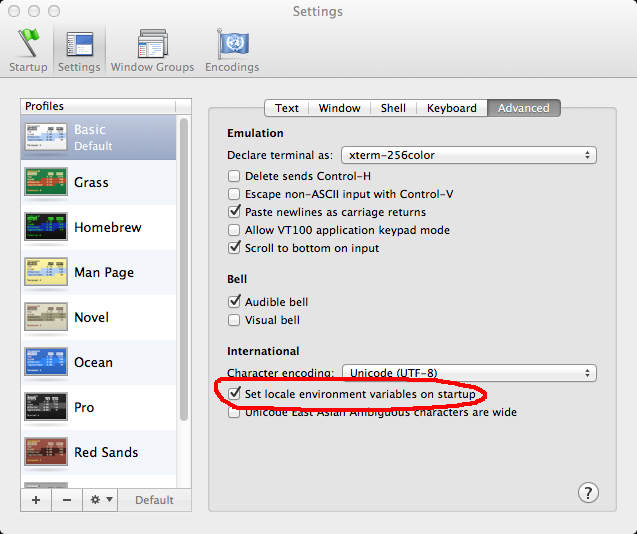

- #Mac locale emulator mac os#
- #Mac locale emulator install#
- #Mac locale emulator software#
- #Mac locale emulator code#
- #Mac locale emulator Pc#
From PowerPC code, this UPP could be passed to the CallUniversalProc( ) function to call it. However, it actually led to a data structure which contained a special trap instruction and flags indicating the instruction set architecture (ISA) of the called code.

#Mac locale emulator code#
For 68k code, this pointer appeared to be an ordinary pointer to code and could be used as such. This was achieved using a new type of pointer called a Universal Procedure Pointer (UPP). Gradually most of the OS was rewritten to be native, so the OS got faster over time.įor the programmer, the transition to the PowerPC was made fairly painless, because the emulator was started and stopped automatically. At first, only time-critical aspects were rewritten in native code, leaving much of the OS emulated. This also allowed Apple time to port the OS to the PowerPC. In the emulator, such traps could be replaced by native PowerPC code, so the only code being emulated was the application itself, and any system API it called could be accelerated with native PowerPC code. In turn, this vector would look up and run the operating system routine from ROM or RAM.
#Mac locale emulator mac os#
One reason that this emulation was so successful is that many of the APIs for the Mac OS were originally implemented as traps on the 680x0 processor therefore, calling an API actually was recognised by the 680x0 as the equivalent of an error condition, which would cause it to handle that error through one of its hardware vectors. The 68LC040 had no floating point instructions, making this feat slightly simpler but no less impressive. This emulator was theoretically capable of emulating 680x0 code faster than any real 680x0 was capable of running it. The emulator could recognise the same sequence of 680x0 code and run the previously-cached PowerPC code to avoid doing the translation again. Dynamic recompilation works by "recompiling" common sections of the code into faster, PowerPC-native, sequences that were locally cached. For the PCI PowerMacs, the dynamic recompilation emulator was used to boost performance. Early versions emulated it by decoding each instruction and immediately carrying out a series of equivalent PowerPC instructions. Apple developer documents indicate that the emulator provided an operating environment most closely resembling that of the Macintosh Centris 610, a system based on the 68LC040 microprocessor. Prior to Traut's arrival there, Connectix had released Speed Doubler, which included its own faster PowerPC 68k emulator that also used dynamic recompilation.Īll versions of this emulator emulated the "user" subset of the Motorola 68EC040 instruction set with a 68020/68030 exception stack frame. A newer version, which used dynamic recompilation for improved performance, was developed by Eric Traut, who later worked on successful emulation projects at Connectix such as Virtual Game Station and Virtual PC. It should be noted that the iOS emulator apps we list below are different than the technology Apple has developed to allow iOS developers to easily port their iOS apps to the Mac.The first version was written by Gary Davidian, who had originally created it for use on the Motorola 88000 CPU, used in Apple's abortive first attempt at a RISC target platform.
#Mac locale emulator install#
There are emulator apps that let you run Windows on a Mac, Android on a PC, and even old gaming consoles, like the Atari, on the Mac or PC.Īnd on e your emulator app is loaded up with the desired operating system, you can then install any app that operating system runs inside of the emulator. As a matter of fact, the technology has been around for decades now.
#Mac locale emulator software#
Because the emulator appears to be a hardware device, you can install software on the emulator that normally requires that device to run–software like operating systems, including iOS.Įmulation is nothing new. In short, an emulator is an app itself that emulates (presents to be) a specific hardware device–such as an iPhone. In recent years a number of iOS emulators have popped up for both Mac and Windows.

The sad thing about this is that you need an iOS device to run them.

There are literally MILLIONS of apps and games that are designed to run on iOS.
#Mac locale emulator Pc#
But compared to the iPhone, Mac, and PC app offerings combined are slim.


 0 kommentar(er)
0 kommentar(er)
